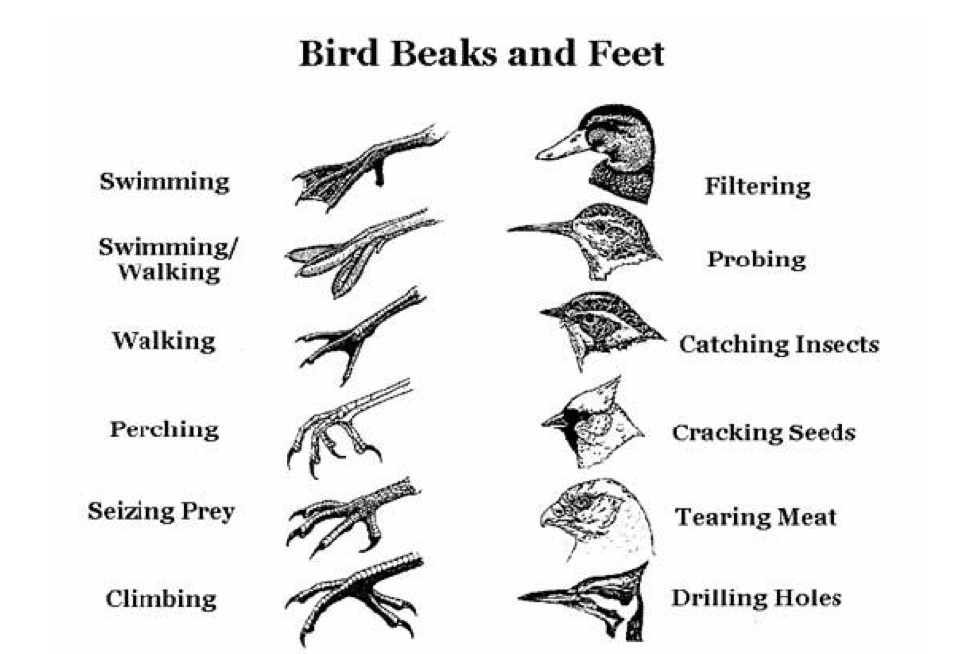 University of Houston Photo – The adaptive characteristics of bill and foot structure optimize a bird’s ability to thrive in its environment
University of Houston Photo – The adaptive characteristics of bill and foot structure optimize a bird’s ability to thrive in its environmentNatural selection is the mode of evolution that makes living things well-suited (adapted) to their environments. This mechanism has sculpted the beaks, feet, and plumage of birds over millions of years, making these animals more successful in their environments. Varieties of beak shapes and sizes are an adaptation for the different types of foods that birds eat. In general, thick, strong conical beaks are great at breaking tough seeds, and are found on seed-eating birds such as cardinals, finches, and sparrows. Hooked beaks, such as those found on raptors like hawks, eagles, falcons, and owls, are adept at tearing meat – perfect for these predatory birds. Straight beaks of intermediate length are particularly versatile and are often found on omnivorous birds like crows, ravens, jays, nutcrackers, and magpies. There are even highly specialized bills such as the flamingo’s: their beaks are comma-shaped for filter-feeding, enabling them to sift through mud and silt in order to devour krill and other crustaceans.
 NPS Photo/Patricia Simpson – The conical beak of a House Sparrow (Passer domesticus) is great at breaking seeds
NPS Photo/Patricia Simpson – The conical beak of a House Sparrow (Passer domesticus) is great at breaking seeds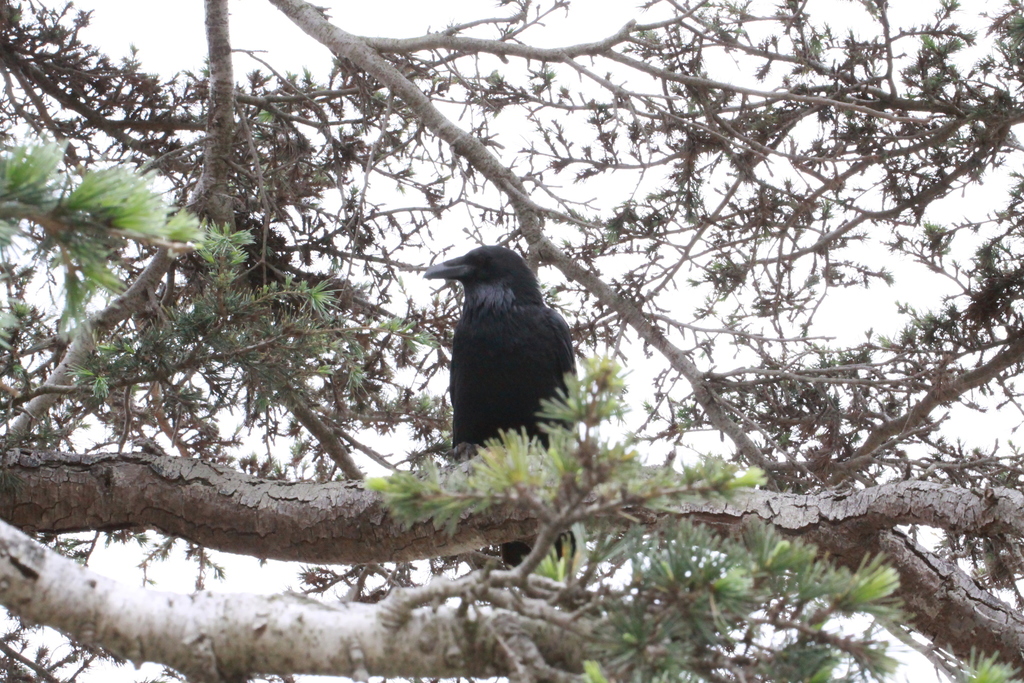 NPS Photo/Patrcia Simpson – The versatile bill of an omnivorous Common Raven (Corvus corax)
NPS Photo/Patrcia Simpson – The versatile bill of an omnivorous Common Raven (Corvus corax)The feet of birds have evolved as an adaptation to the landscapes they inhabit. Wading birds, such as egrets and herons, have long toes to help with weight distribution as they make their way over reeds and lily pads. Ducks and pelicans have webbed feet which, much like SCUBA fins, make them more adept swimmers. Some birds, such as the American Coot, have lobate feet - a “halfway” point between webbed feet and long-toed waders to assist in both modes of locomotion. Many bird species, like most songbirds, are also referred to as “perching birds” because they have a foot structure that allows them to grasp branches - the configuration of one toe at the back of the foot acts like a pincher, stabilizing the perched bird.
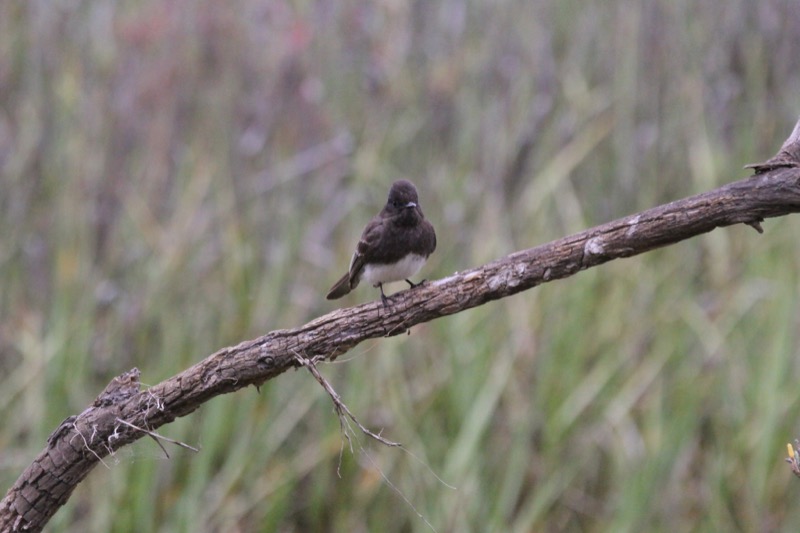 NPS Photo/Patricia Simpson – Three toes in the front and one toe in the back make perching easy for this Black Phoebe (Sayornis nigricans)
NPS Photo/Patricia Simpson – Three toes in the front and one toe in the back make perching easy for this Black Phoebe (Sayornis nigricans)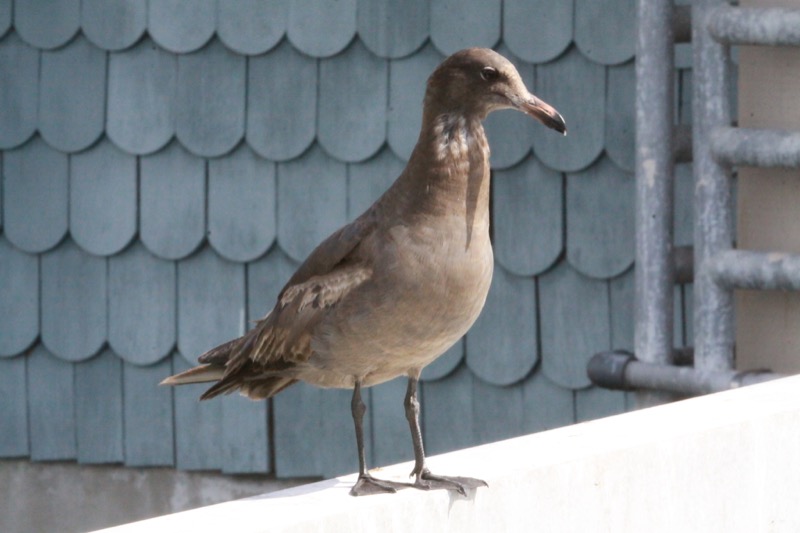 NPS Photo/Patricia Simpson – Webbing between the front toes (palmate) gives this Heermann’s Gull (Larus heermanni) a paddling advantage in the ocean
NPS Photo/Patricia Simpson – Webbing between the front toes (palmate) gives this Heermann’s Gull (Larus heermanni) a paddling advantage in the ocean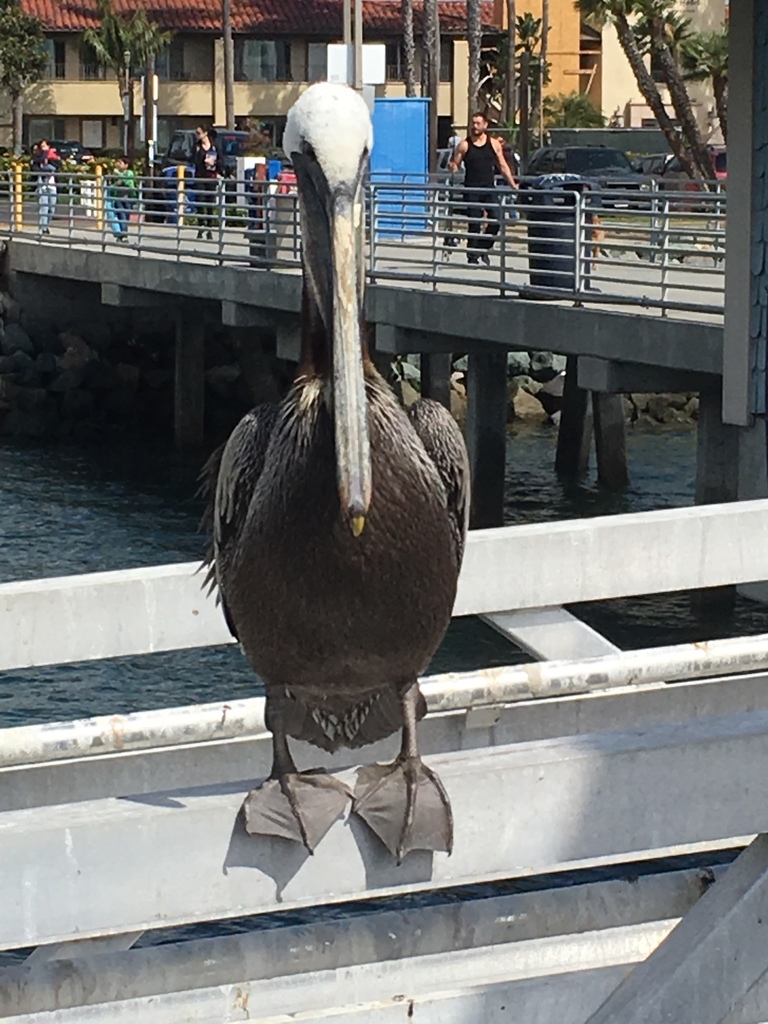 NPS Photo/Patricia Simpson – This California Brown Pelican (Pelecanus occidentalis californicus) is ocean adapted with webbing between all four toes (totipalmate) and a giant bill with a large fish-storing pouch
NPS Photo/Patricia Simpson – This California Brown Pelican (Pelecanus occidentalis californicus) is ocean adapted with webbing between all four toes (totipalmate) and a giant bill with a large fish-storing pouchNail structure plays an additional role in foot adaptation: the acute, strong nails of woodpeckers and flickers gives these species the ability to stand on and climb the vertical trunks of trees, a useful adaptation for reaching insects that burrow beneath the bark. The grasping, sharp claws of a raptor, on the other hand, are honed for subduing and even killing prey. Most running birds, such as ostriches and emus, do not perch, therefore their back claw is either reduced or entirely absent.
Plumage, or a bird’s feather pattern, is also shaped by natural selection for two main reasons (besides the obvious benefit of flight): mating and survival. Both of these categories increase individual fitness, which is the measurement of an organism’s ability to survive and procreate. Plumage that is attractive to the opposite sex allows for more mating opportunities and, thus, the ability to create more young. Additionally, feathers can disguise an organism, creating camouflage for those that wish to hide from predators, or to sneak up on prey. Cryptically colored (camouflaged) birds tend to resemble the background they wish to hide against: the mottled black and brown plumage of nocturnal nightjars, for example, helps them to blend in against the woody ground or tree branches as they roost during daylight hours. The specialized flight feathers of owls, on the other hand, are fringed for silent flight, making owls nearly impossible to detect as they swoop down upon prey.
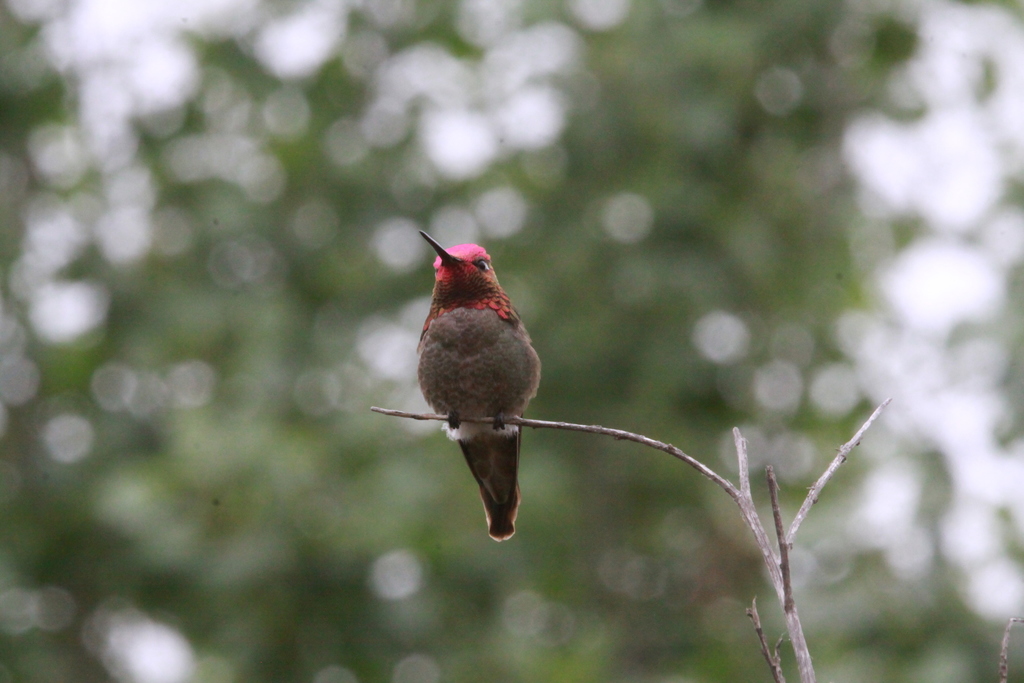 NPS Photo/Patricia Simpson – The flashy pink of a male Anna’s Hummingbird (Calypte anna) gorget helps them to garner the attention of females
NPS Photo/Patricia Simpson – The flashy pink of a male Anna’s Hummingbird (Calypte anna) gorget helps them to garner the attention of females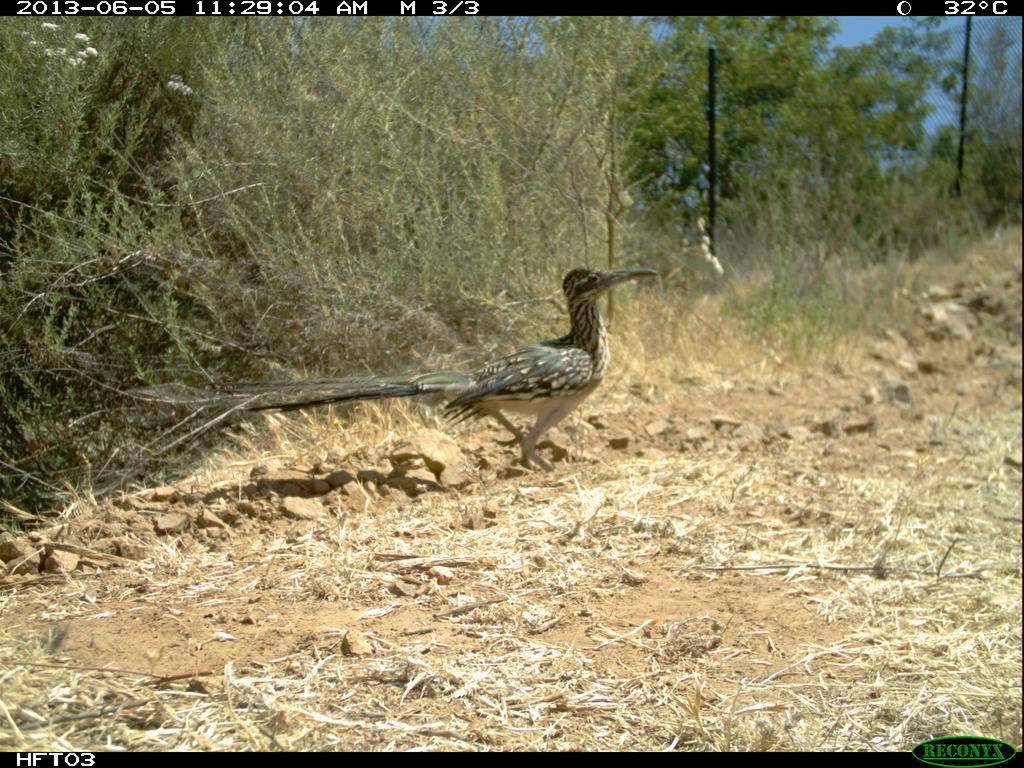 NPS Photo/Patricia Simpson – A Greater Roadrunner’s (Geococcyx californianus) plumage helps it to blend in to the foliage of its environment
NPS Photo/Patricia Simpson – A Greater Roadrunner’s (Geococcyx californianus) plumage helps it to blend in to the foliage of its environmentHere at Cabrillo National Monument (CNM), there are many different types of birds. Located on the great Pacific Flyway, CNM houses both residential and migratory shorebirds, seabirds, raptors, and songbirds. From the California Brown Pelican (Pelecanus occidentalis californicus)
to the California Gnatcatcher (Polioptila californica), CNM is a great location to birdwatch. So come on down to view our feathered friends! And the next time you observe a bird, whether it’s at the Monument or elsewhere, take a look at its beak, feet, and feathers to recognize its incredible adaptations!
References
All about birds:https://academy.allaboutbirds.org/
For more information about beaks and foraging (eating):
http://projectbeak.org/adaptations/beaks_cracking.htm
https://www.thespruce.com/bird-foraging-behavior-386457
For more information about feet:
http://projectbeak.org/adaptations/feet.htm
http://fsc.fernbank.edu/Birding/bird_feet.htm
